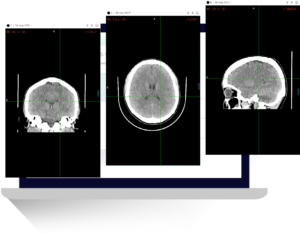Workflow optimization is crucial in healthcare for improving efficiency, reducing costs, and enhancing patient outcomes. Key strategies include implementing Electronic Health Records (EHRs), utilizing workflow management software, and enhancing communication channels. EHRs digitize patient information, making it easily accessible and manageable, which improves coordination and decision-making among healthcare providers. Workflow management software automates routine tasks, reducing errors and freeing up time for patient care. Secure messaging platforms ensure real-time, HIPAA-compliant communication, facilitating better teamwork and faster information sharing.
Standardizing procedures and leveraging data analytics are also vital for optimizing workflows. Standardized protocols ensure consistent, efficient care by reducing variability in clinical and administrative processes. Data analytics provides actionable insights into performance metrics, helping healthcare facilities identify areas for improvement, anticipate patient needs, and allocate resources efficiently. These tools enable healthcare providers to make informed decisions that enhance operational efficiency and patient outcomes.
Finally, fostering a culture of continuous improvement is essential. Regularly evaluating and refining workflows based on staff and patient feedback ensures adaptability and sustained excellence. Encouraging staff involvement in the improvement process boosts morale and productivity, creating a more responsive and efficient healthcare environment. By embracing these strategies, healthcare facilities can streamline operations and deliver high-quality care.
Step-by-Step Guide:
Step 1: Accessing Case Tab
- Guide: Begin by locating all your cases listed under the case tab.
- Action: Navigate to the case tab to view your list of cases.
Step 2: Monitoring Case Progress
- Guide: Each case shows a completion percentage, indicating its progress.
- Action: Review the completion percentage to gauge the status of each case.
Step 3: Expanding Cases
- Guide: For more details on a case, expand it by clicking on its name.
- Action: Click on a case name to see more information and progress.
Step 4: Viewing Custom Workflow Stages
- Guide: Custom workflow stages for each case are visible upon expansion.
- Action: Observe the various stages of your custom workflow within each case.
Step 5: Custom Steps in Stages
- Guide: Inside each stage, you’ll find the custom steps you have created.
- Action: Review and manage the steps within each workflow stage.
Step 6: Assigning Members to Steps
- Guide: Assign workspace members to specific steps for accountability.
- Action: Select members to assign to each step in the workflow.
Step 7: HIPAA-Compliant Communications
- Guide: Securely communicate regarding specific workflow steps.
- Action: Engage in HIPAA-compliant communications related to various steps.
Step 8: Completing Stages
- Guide: Mark a stage as complete to update your dashboard and reports.
- Action: Click ‘Complete’ on a stage when it is finished.
Step 9: Utilizing the Actions Tab
- Guide: The Actions Tab offers additional functionalities.
- Action: Explore the Actions Tab for more options like reporting issues.
Step 10: Reporting Issues
- Guide: Identify and report performance issues for optimization.
- Action: Report any problems related to equipment, rooms, personnel, etc.
Step 11: Accessing Reports
- Guide: Your reports tab in the main menu provides detailed case analytics.
- Action: Click on ‘Reports’ to access and review case reports.
Step 12: Case Status and Progression
- Guide: Monitor the status of each case by its progression.
- Action: Review which cases are progressing and which are stagnant.
Step 13: Tracking Rescheduled Cases
- Guide: Identify which cases have been rescheduled.
- Action: Pay attention to rescheduled cases for better time management.
Step 14: Understanding Root Causes
- Guide: Delve into the root causes of case concerns.
- Action: Analyze reports to understand why certain cases are facing issues.
Conclusion:
By following this guide, you can effectively optimize your workflows in HUB Healthcare, ensuring that cases are managed efficiently and all stages of the workflow are monitored closely. This approach helps in identifying bottlenecks and improving overall operational performance.
How HUB Healthcare Can Help
HUB Healthcare offers a comprehensive solution designed to enhance communication, streamline workflows, and improve overall efficiency in healthcare settings. Our platform includes features such as medical case management software, secure document management, and healthcare analytics to ensure optimal patient care and operational performance. By leveraging HUB Healthcare’s robust tools, organizations can reduce workflow bottlenecks, automate repetitive tasks, and facilitate better collaboration among healthcare providers. This not only improves work quality but also enhances patient outcomes, making HUB Healthcare an essential partner in achieving healthcare excellence. Care coordination




